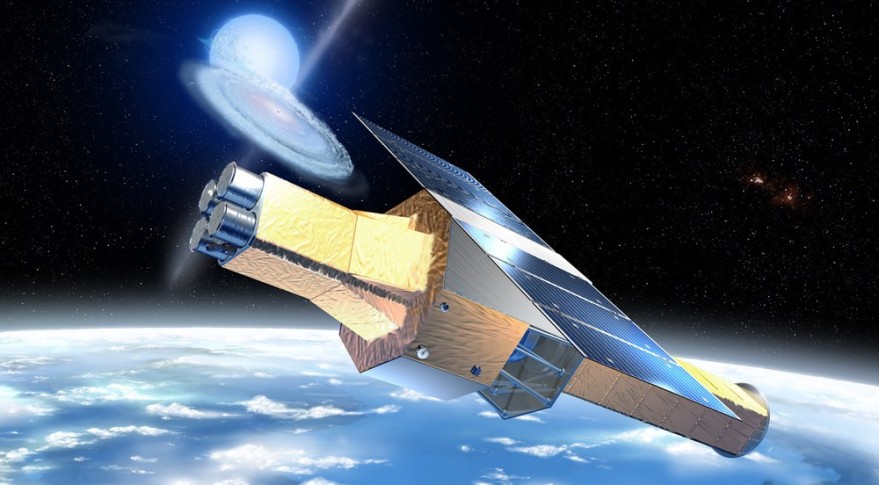Recovery of Japan's Ailing Hitomi Satellite Still Possible: JAXA Official

WASHINGTON — A senior official with the Japan Aerospace Exploration Agency (JAXA) said March 29 that he still believed it was possible to restore control of the Hitomi astronomy satellite, but that any recovery effort would likely take months.
Speaking on a panel about international cooperation in space at the National Academies here, Masaki Fujimoto, director of international strategy and coordination at the Institute for Space and Astronautical Science, part of JAXA, said it was likely Hitomi was mostly intact despite an incident March 25 that generated debris and caused the spacecraft to tumble.
"There's hope for recovery unless the spacecraft is severely damaged," he said. "We haven't given up recovery of the spacecraft."
Fujimoto noted that controllers have detected brief radio signals from Hitomi since the incident that disabled it. According to a March 29 statement posted on the JAXA web site, the agency received signals at ground stations at about 9 a.m. and 11:30 a.m. Eastern March 28. "JAXA has not been able to figure out the state of its health, as the time frames for receiving the signals were very short," JAXA stated.
Those transmissions, though, suggest the spacecraft has not completely broken up, as some feared after the U.S. Space Command's Joint Space Operations Center reported tracking five pieces of debris from the spacecraft. "It makes it hard to assume that the spacecraft has broken up, despite some rumors," Fujimoto said.
JAXA launched Hitomi, an X-ray astronomy satellite, Feb. 17 and was in the middle of a three-month testing and instrument calibration period when the incident took place. Fujimoto said there was no evidence of any problems with the spacecraft right up until contact was lost early March 26. "During its initial operation it was working perfectly," he said.
Hitomi's problems, he said, likely started with a loss of attitude control in the spacecraft, which disrupted the spacecraft's ability to generate power from its solar panels and communicate with the ground. What caused that loss of attitude control isn't known, and he declined to speculate after the panel on potential causes.
Breaking space news, the latest updates on rocket launches, skywatching events and more!
However, U.S. Air Force officials said March 29 that they had seen no evidence that Hitomi was struck by orbital debris. That suggests a problem with the spacecraft itself most likely generated the debris and caused the spacecraft to lose attitude control.
In its statement, JAXA said it was using Japanese radars and telescopes to track Hitomi. A telescope had seen two objects in Hitomi's original orbit, while a radar detected one, which JAXA said corresponded with the one transmitting radio signals most recently detected on the ground.
Fujimoto said JAXA is working on a plan to recover the spacecraft once it is able to restore communications and stop the spacecraft from tumbling. He cautioned, though, that any recovery of Hitomi will be a long-term effort. "The recovery will require months, not days," he said. "That's the kind of timescale he have in mind."
This story was provided by SpaceNews, dedicated to covering all aspects of the space industry.

Jeff Foust is a Senior Staff Writer at SpaceNews, a space industry news magazine and website, where he writes about space policy, commercial spaceflight and other aerospace industry topics. Jeff has a Ph.D. in planetary sciences from the Massachusetts Institute of Technology and earned a bachelor's degree in geophysics and planetary science from the California Institute of Technology. You can see Jeff's latest projects by following him on Twitter.

